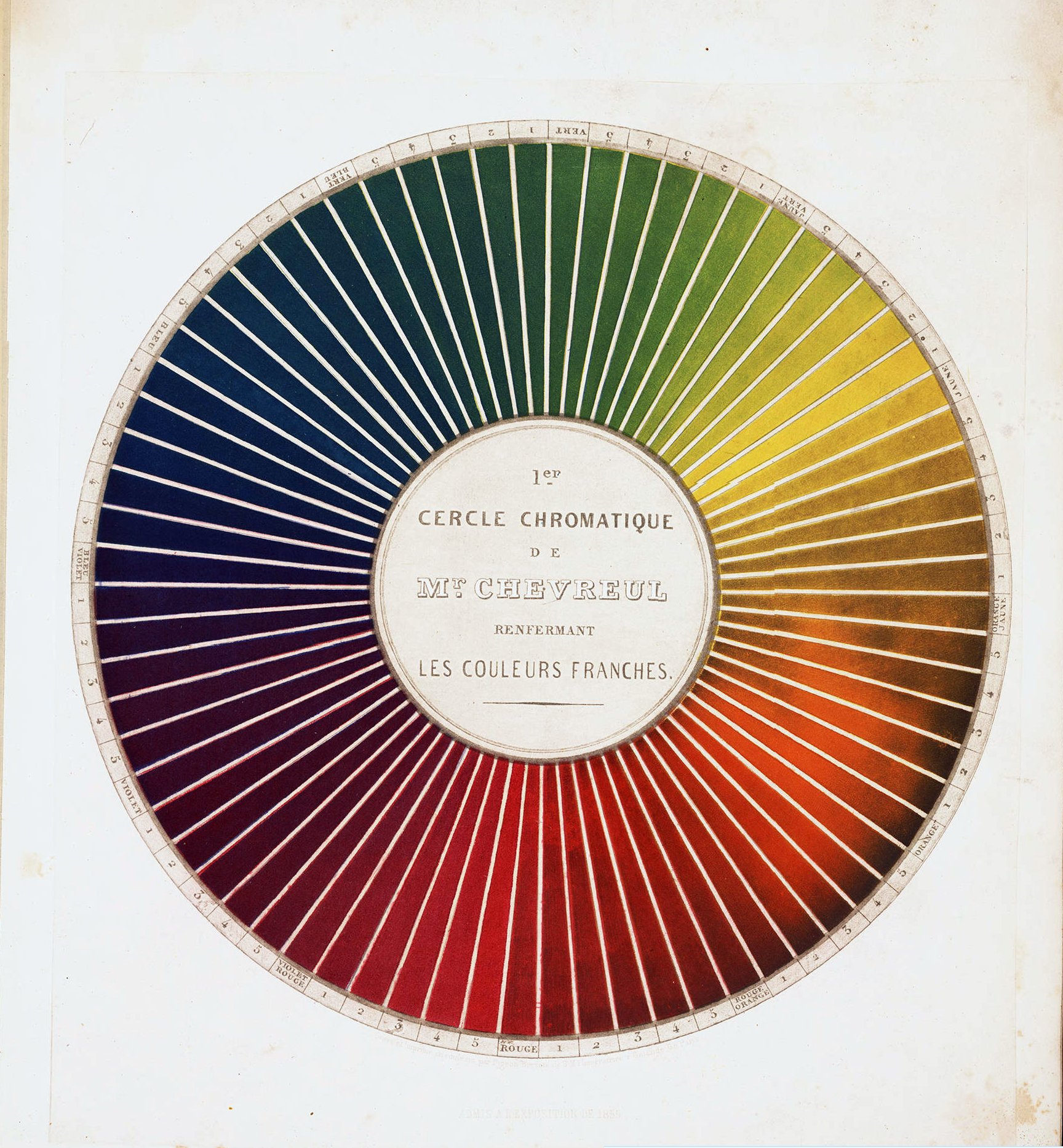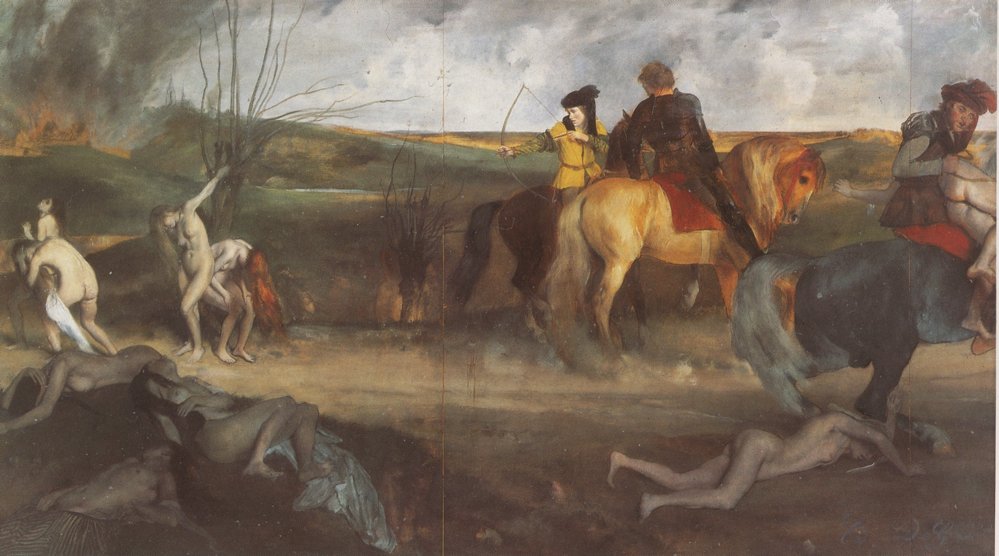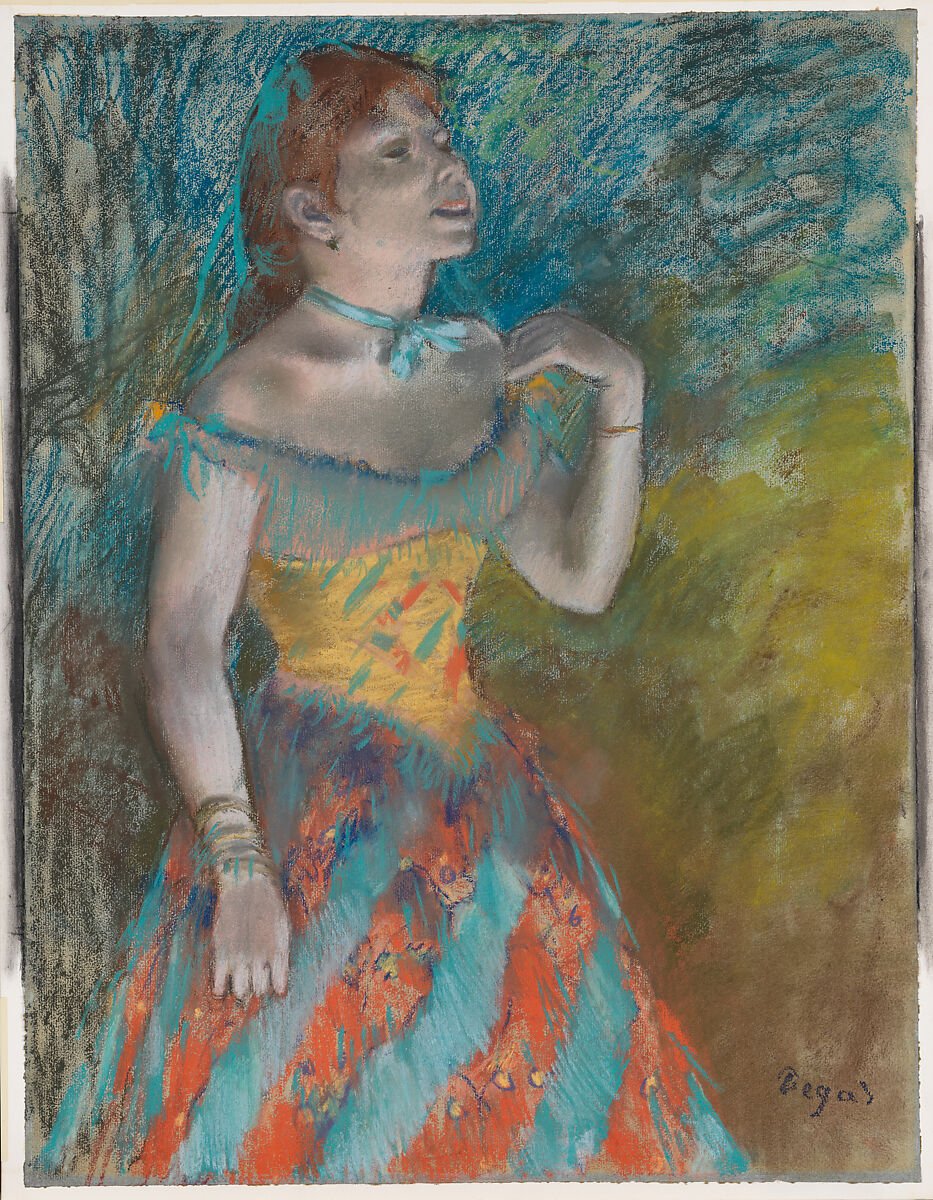On “Max Beckmann: The Formative Years, 1915–1925” at Neue Galerie.
Max Beckmann reflected the traumas of the First World War from his own German perspective. As a volunteer medical orderly in East Prussia in 1914, he wrote to his first wife, Minna Beckmann-Tube, that he “experienced dreadful things and died myself with them several times.” A year later, he suffered a nervous breakdown while serving in Belgium. An exhibition now at Neue Galerie looks to what the show calls Beckmann’s “formative years,” from 1915 through 1925, following this wartime service, in a focused presentation that helps us better locate one of the last century’s more enigmatic artists.1 Curated by Olaf Peters, a professor at Martin Luther Universität Halle-Wittenberg, “Max Beckmann: The Formative Years, 1915–1925” brings together one hundred works by the artist to present the decade-long period when Beckmann broke away from an Impressionist-like style to pursue what became known as Neue Sachlichkeit (New Objectivity).
For Beckmann, the trenches of the Western Front mirrored something of his own pitched battles with French modernism. He called Henri Matisse, for example, one of the “untalented persons” of contemporary art. As Peters notes in the exhibition catalogue, “Max Beckmann adopted early on a position against the artistic avant-garde and did not shy away from public controversy when doing so.” In the face of Fauvism, Primitivism, Expressionism, and the other -isms of modern painting, Beckmann looked to create his own distinctly Germanic contemporary art, one influenced by Wilhelm Leibl, Max Liebermann, Adolf Menzel, and other “instructive artists,” as he put it, of the late nineteenth century.
Max Beckmann, Christ and the Sinner, 1917, Oil on canvas, Saint Louis Art Museum, Missouri. © 2023 Artists Rights Society, New York.
Even as Beckmann worked certain elements of cubist fracture and expressionistic draftsmanship into his compositions, he pushed past modernism’s surface interests to remain focused on the depth of pictorial space. “As for myself,” he wrote in a statement titled “The New Program,” “I paint and try to develop my style exclusively in terms of deep space, something that in contrast to superficially decorative art penetrates as far as possible into the very core of nature and the spirit of things.”
Beckmann’s powers of penetration are on display in the exhibition’s compressed opening gallery on Neue’s second floor. The presentation begins with three self-portraits—a drypoint print, a drawing in pen and ink, and another drawing in pencil, all from 1916 and 1917 (on loan respectively from the Museum of Modern Art, New York; the Art Institute of Chicago; and the Kupferstichkabinett, Staatliche Museen zu Berlin). Gaunt and sickly, with hands bony and clutched, the faces here seem “almost too awake,” notes Peters, revealing Beckmann’s alien-like “diagnostic gaze.” Far from romanticized, they are Germanified self-images, ones that turn to the horrors of sight and choose not to look away.
Max Beckmann, Adam and Eve, 1917, Neue Nationalgalerie, Staatliche Museen Zu Berlin, Germany. © 2023 Artists Rights Society, New York.
Those horrors are reflected in Beckmann’s angular and emaciated biblical images to their right—Descent from the Cross (1917, Museum of Modern Art, New York), Christ and the Sinner (1917, Saint Louis Art Museum), and Adam and Eve (1917, Neue Nationalgalerie, Staatliche Museen zu Berlin). “I saw some remarkable things,” Beckmann said of his time at the front. “In the semidarkness of the shelter, half-naked, blood-covered men that were having white bandages applied. Grand and painful in expression. New visions of scourgings of Christ.”
Beckmann’s great gift was to understand how the urgency of contemporary art should be reflected in the substance of painting rather than in its style. Distancing himself from the many movements of modernism—even including the Neue Sachlichkeit with which he became closely associated—Beckmann came to be seen as a “defender of a traditional art oriented around representational skill,” writes Anna Maria Heckmann of Berlinische Galerie, “which is why a reputation as a reactionary clung to him from the perspective of his avant-garde colleagues.”
Max Beckmann, Landscape with Balloon, 1917, Museum Ludwig, Cologne. © 2023 Artists Rights Society, New York.
Nevertheless, in the originality of his vision, unencumbered by any one style, Beckmann ended up outflanking his more radical peers. Compare the classical roundedness of Portrait of Senior Medical Officer Prof. Dr. Philaletes Kuhn (1915, private collection) with the grotesqueries of Adam and Eve (1917, published 1918, Museum of Modern Art, New York). Or contrast the loftiness of Landscape with Balloon (1917, Museum Ludwig, Cologne) with the airlessness of Women’s Bath (1919, Neue Nationalgalerie, Staatliche Museen zu Berlin). As he sought to “build a tower in which humanity can shriek out its rage and despair and all its poor hopes and joys and wild yearning,” Beckmann allowed his draftsmanship and composition to range in unexpected and startling ways.
Upstairs at Neue, the exhibition’s third floor explores this range in greater detail. Some of his portraits, for example the image of his wife from 1924 (Pinakothek der Moderne, Bayerische Staatsgemäldesammlungen, Munich), reveal a Raphael-like softness. Yet even these elegant paintings convey a certain unease. Beckmann’s Portrait of Elsbet Götz (1924, Museum Behnhaus Drägerhaus, Lübeck) depicts a young woman in a green dress in front of a red background, looking out with a reserved gaze. The backstory of this painting, described in the exhibition, contains its own horror. Götz met Beckmann through her brother, a student in art history who worked at the Städel-Museum in Frankfurt am Main as an assistant to the director Georg Swarzenski. She was a kindergarten teacher who founded her own school. Within a decade of sitting for this portrait, due to the rise of National Socialism, as a Jew, Götz was prohibited from teaching non-Jewish children. Despite worsening circumstances, she remained in Germany to care for her mother. In 1942 she was deported to Theresienstadt. In 1944 the Nazis shipped her to Auschwitz, where she was killed. “The figure situated in a warm red backdrop radiates a statuesque calm that testifies to her self-confidence and self-determination,” writes Peters of her resolve to stay in Germany, “thus giving the National Socialists the opportunity to murder Elsbet Götz.”
Even without the benefit of such hindsight, in Götz’s blank stare, her pursed lips, and her folded hands, Beckmann reveals the underlying anxiety of the Weimar years. Political uncertainty and economic upheaval undermined the sophistication of the age and ultimately gave way to graver terrors. The same goes for Paris Society (1925/1931/1947, Solomon R. Guggenheim Museum), one of the highlights of the exhibition, just to the left of these portraits. Beckmann worked on this assembly of figures multiple times over a twenty-year period, adding famous faces, such as that of Jean-Paul Sartre, along the way. And yet much is off-kilter in their interactions as they look in different directions, pushed together in unnatural proximity. This composition in circus-like colors tilts as though it were the last cocktail party on a sinking ship. Hidden in the lower-right corner, hand to head, Beckmann includes a profile of himself.
Max Beckmann, Self-portrait in front of Red Curtain, 1923, Oil on canvas, Private collection. © Artists Rights Society, New York.
Beckmann never abandoned pictorial depth. Instead he placed the content of compositions under ever greater pressure as he squeezed his figures together. “Most important for me is volume,” he said, “trapped in height and width.” In the confines of the picture frame, as he wrote in his “Creative Credo” of 1918–20, “I try to capture the terrible, thrilling monster of life’s vitality and to confine it, to beat it down and to strangle it with crystal-clear, razor-sharp lines and planes.” Far from seeking transcendence, “in my paintings I accused God of everything he has done wrong.”
The darkness of Beckmann’s vision is best seen in the drawings and suites of prints spread across Neue’s upper floor. Exceptional among these is his Hell portfolio of 1919 (Museum of Modern Art, New York). Originally published in an edition of seventy-five signed copies by J. B. Neumann Verlag, Die Hölle depicts the chaotic scenes of the post-war city, where battles continued to rage over Germany’s future. On the cover Beckmann offers a grotesque self-portrait set in a frame. Beneath he includes a message written in script: “We ask the esteemed public to step up. It has the pleasant prospect of not being bored for perhaps ten minutes. Anyone who is not satisfied will have his money returned.”
Max Beckmann, “The Way Home” from the Hell portfolio, 1919, Lithograph, Museum of Modern Art, New York. © 2023 Artists Rights Society
The carnivalesque invitation opens onto the hellscape of the German street, as figures are pushed and crushed in a stampede of images. Rifles and machine guns are fired into the crowds. Hungry children pray around a barren table. Prostitutes expose themselves by candlelight. Drunk veterans sing patriotic songs. In a final plate, titled The Family, Beckmann again depicts himself. As Beckmann points away, his child in a soldier’s helmet plays with toy grenades while his wife holds up her hands. The playacting must go to sleep.
Neumann published a thousand smaller lithographic booklets of this series, which were offered for two marks each, but not a copy was sold. The hell was all too real in inflationary Weimar. Nevertheless, the grotesqueries of the series, framed by Beckmann’s own self-image, helped inform the artist’s paintings in the 1920s. Repeatedly presenting himself in high-style reserve, Beckmann here becomes the elegant ringleader for his circus of Weimar excess. He looks directly out through tired eyes, often with cigarette in hand, in his Self-Portrait on Yellow Ground with Cigarette (1923, Museum of Modern Art, New York), Self-Portrait in Front of Red Curtain (1923, private collection), Self-Portrait with White Cap (1926, anonymous), and Self-Portrait in Tuxedo (1927, Harvard Art Museum).
Max Beckmann, Self-portrait with Cap, 1926, Oil on canvas, Private collection. © Artists Rights Society, New York.
Displayed alongside these self-portraits are Beckmann’s dense ensemble compositions, often arranged in a chaotic vertical format that takes time to absorb in full. Here the fun of his garishly colored beach scenes and carnival visions are cut through with dread. In The Trapeze (1923, Toledo Museum of Art), arms and legs have been twisted in a knot as a breast is seen falling out of its costume. In The Dream (1921, Saint Louis Art Museum), musicians have become tangled around their instruments as a figure with amputated hands embraces a fish. In The Bark (1926, private collection), passengers founder in an overloaded boat, while in Lido (1924, Saint Louis Museum) the swimmers seem to have been cut in two by the waves and their own jagged costumes.
Beckmann’s claims for a particular German art did not stop him from losing his teaching position in Frankfurt and being labeled a degenerate by the Nazi regime. In 1937 he went into self-imposed exile in the Netherlands where he tried to obtain an exit visa to emigrate to the United States. As he became trapped in Amsterdam for the next ten years, he painted his most well-known work—the haunting triptychs that merged his vertical formats with an increasingly enigmatic iconography to speak to his spiritual and physical isolation. It was only in 1947, three years before his death at age sixty-six, that Beckmann was able to move away, joining the St. Louis School of Fine Arts and teaching at Washington University and the Brooklyn Museum.
It is a loss for this focused show that we do not see something of Beckmann’s late work for which he is best known. It would also have been illuminating to include some examples of his younger production, such as his Sinking of the Titanic of 1912–13 or his Self-Portrait (Laughing) of 1910, which we only find in reproduction in the exhibition catalogue. If “Beckmann only achieved a unique artistic style because of the war,” as Olaf Peters writes, it helps to get some sense of what came before as well as a better appreciation of what is to come.
Max Beckmann, The Dream, 1921, Oil on canvas, Saint Louis Art Museum, © 2023 Artists Rights Society, New York.
“It’s stupid to love humanity,” Beckmann said, “nothing but a heap of egoism (and we are a part of it too). But I love it anyway. I love its meanness, its banality, its dullness, its cheap contentment, and its oh-so-very-rare heroism.” In capturing what he called “transcendental objectivity,” which he saw as coming “out of a deep love for nature and humanity,” Beckmann displayed his own heroics. He fought for painting and won his victories on his own terms.























